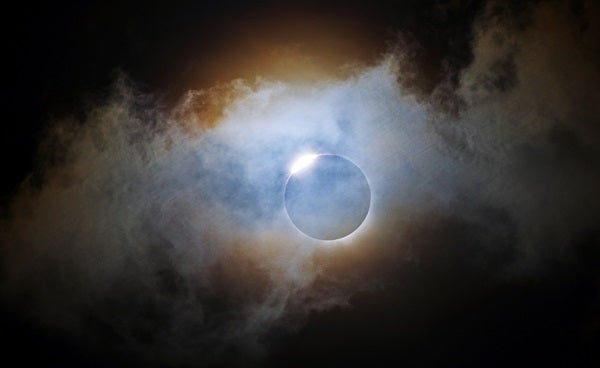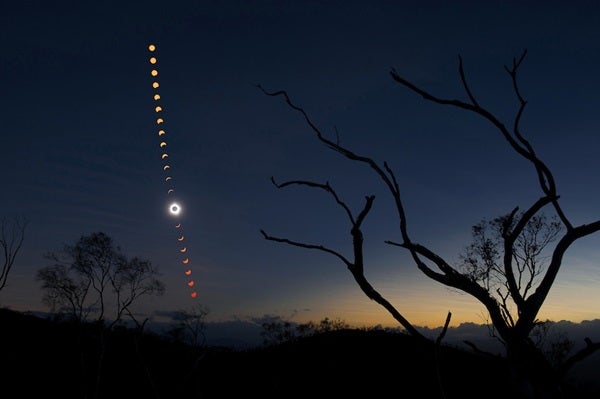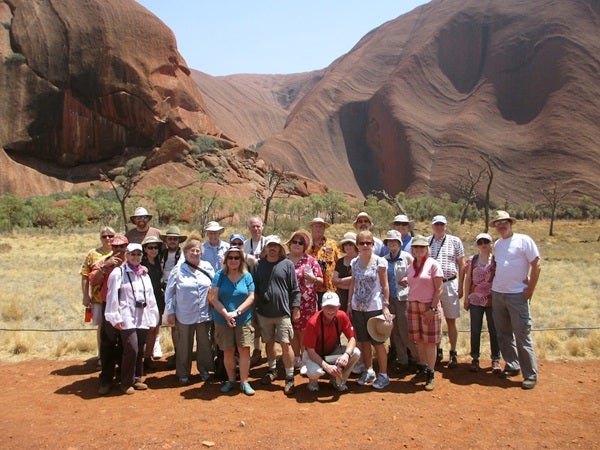This article originally ran in the March 2013 issue of Astronomy.
The big astronomy event of 2012 occurred Wednesday, November 14. Select observers who either found or put themselves in the right locations witnessed one of nature’s grand events — a total solar eclipse. I was one of them, the lead astronomer for a trip organized by Astronomical Tours of Warrensburg, Missouri.
Our group witnessed the lineup I call “sublime celestial geometry” under a relatively clear sky in northeastern Australia. For nearly two minutes, the Moon’s orbit aligned exactly along the Earth-Sun line, and our satellite’s shadow created a narrow zone of darkness — totality!
Before the big day
Because I’m tall, flights don’t thrill me, especially long ones. But no other option existed, so we flew from Milwaukee to Houston, then to San Francisco, and then to Sydney, Australia. The final leg took some 14½ hours. Ugh!
You’d think after being crammed into an airline seat for half a day, all I’d want to do would be sleep. Think again. After clearing customs, we headed for our hotel. Check-in was later, so a group of us left our bags with the concierge and headed to the world-renowned Sydney Opera House.
We then walked across the Sydney Harbour Bridge. Our route afforded grand views of the Opera House, ships in the harbor, and surrounding neighborhoods. We later attended our first group dinner and then retired for a 6:45 a.m. flight to Cairns, where we’d spend the next five days.
On our first full day in Cairns, we enjoyed a natural attraction as famous in Australia as the Grand Canyon is in the United States: the Great Barrier Reef. We took a two-hour boat ride to a part of the giant wonder set aside for tourists.
We moored to a pontoon vessel that became our base of operations. Most of our group snorkeled while others used scuba gear. We saw lots of colorful and amazing fish — including sharks and turtles — and our whole group had an absolute blast.
The next day, we took a two-hour train ride through part of the Australian rainforest. We moved slowly up a mountain through switchbacks and tunnels. At the top, we found Kuranda Village, an old hippie town full of art and souvenir shops.
Rather than take the railway back to Cairns, we boarded the Skyrail, an hour-long cable car ride above the rainforest’s canopy that provided sweeping treetop vistas. The Skyrail has two stops where grand views of canyons and waterfalls await the photographically inclined.
Eclipse!
The big day arrived for our group with the same tension that grips a rookie NFL player in his first Super Bowl. During four days of touring Australia, we’d seen lots of clouds and numerous rain showers. Such events tend to dishearten eclipse-chasers, but we remained positive.
The buses left our hotel at 3:30 a.m. During the previous night (and into the morning), Jen Winter and Fred Bruenges from Astronomical Tours had spent hours poring over weather forecasts and satellite maps. In the end, they chose a beach they had selected more than a year ago.
The one-hour drive afforded anyone with equipment an hour and a half to set up. Some in our group had brought telescopes, and it seemed nearly everyone was intent on photographing the spectacle.
First contact, the initial “bite” of the Moon out of the Sun’s disk, occurred shortly after sunrise. Clouds floated everywhere, but our view of the eclipse was mostly clear. Five minutes before totality, I spotted Venus above the Sun. Two minutes later, we all saw shadow bands, the evanescent features that occur when the solar disk shrinks to a sliver. And these bands were great — the best I’ve ever seen.
As the Moon hid the Sun, darkness enshrouded us and the famous call announcing the start of totality went out: diamond ring! Filters came off telescopes, binoculars, and cameras, and shutters started clicking. At the ring’s appearance, my wife and I each switched from our filtered naked-eye views to binoculars.
We saw Baily’s beads, prominences (including two huge ones), and the corona. Unfortunately, a cloud then moved across the Sun, and it didn’t move away until most of the total phase was gone. Just before totality ended, however, we did see some different prominences, Baily’s beads on the Moon’s other side, and the second diamond ring.
Then light began to return to the Australian coast, and we started buzzing. It wasn’t perfect, but all judged it a rousing success. Had this been any other day, we may as well have slept in.
Post-eclipse bliss
The day after the eclipse, our group took a 2½-hour flight to Uluru, the country’s colossal natural wonder formerly known as Ayers Rock. Our bus first shuttled us to Kata Tjuta, a formation similar to Uluru, where we trekked into a canyon along some of the most impressive scenery I’ve encountered. We then observed Uluru from the west at sunset, from the east at sunrise the following morning, and via bus. Up close, the rock appears incredibly textured, giving it an almost fabric-like appearance. We also got to see some Aboriginal rock art.
The next day, we toured Kings Canyon, another natural wonder that looks a lot like the desert in the American Southwest. That night, our group gathered beneath a clear, dark sky and turned our collective gaze southward. The most prominent star was Canopus (Alpha [α] Carinae). Above and to its right, the Large and Small Magellanic Clouds (LMC and SMC) hung above the South Celestial Pole. These wonders are satellite galaxies of our Milky Way. Half our group had never seen them.
We aimed telescopes and binoculars at the LMC and sought out the famous Tarantula Nebula (NGC 2070). Then we targeted the SMC and its nearby neighbor, 47 Tucanae (NGC 104), the sky’s second-brightest globular cluster. I pointed out obscure southern constellations, suggested deep-sky targets, and answered questions as we moved from one object to the next.
A memorable adventure
When I someday look at all my travels, this trip will rank highly. And for good reason: Few things could top standing beneath the Moon’s shadow in the land Down Under.












